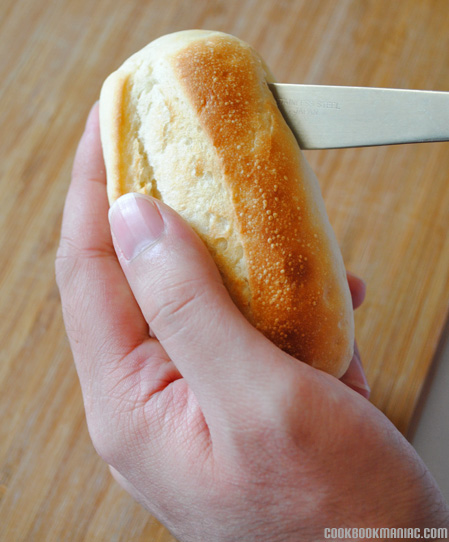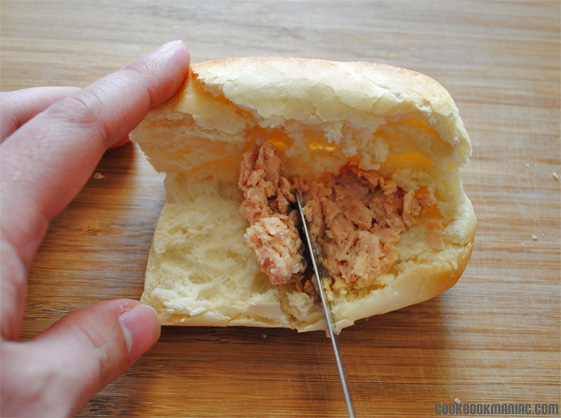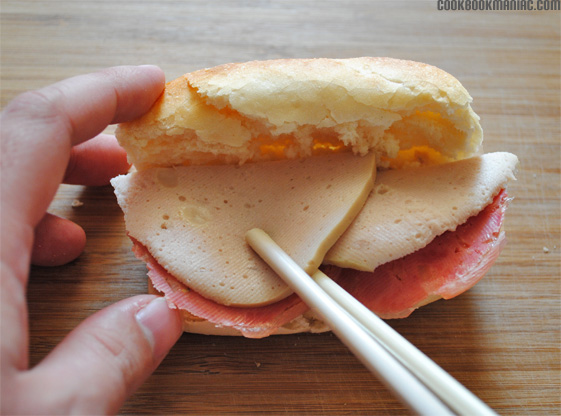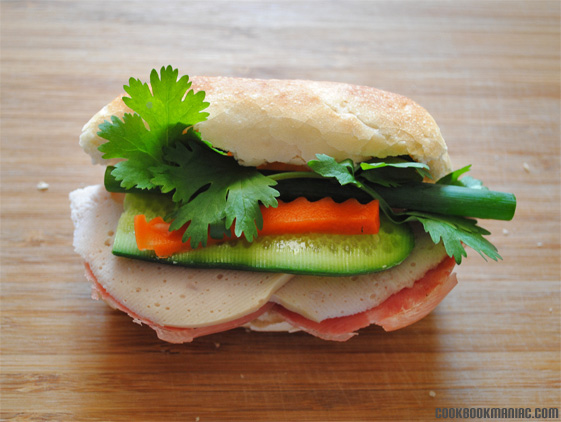There is a grace that permeates through every nook and cranny of my home when this pot is brewing in the kitchen. It is the thing that gives my body a sense of safety and nurture. It is the meal that I call home, and whenever I catch a whiff of the precious spices simmering along with the marrow bones, my neck instantly arches up and my nose points up into the air. “Yes, a fresh pot is brewing”. An engaged and knowing smile crosses my heart and I know I must give in to the temptation to what Vietnamese call Phở.
There must be some magical formula that causes the hard-working people of Vietnam to participate in the ritual of eating this morning, noon and night. It is too good to save for one time of the day, and if your cravings dictate when you eat, you too may find yourself huddling at a table, slurping away at the smooth as silk rice noodles first thing in the morning with your family.
There is also the never ending search for the ultimate broth. No matter how unapologetically perfect one’s broth has become… it could be better. Every chef or cook of a pho noodle house understands that no matter how good their broth is, they will never cease to make adjustments to find the ultimate, most succulent broth known to humans.
Then there are the rumours, perhaps pedalled along by non-believers, accusing that the addictive nature of this dish can be caused by either the copious amounts of MSG dumped into the soup, or that one of the secret herbs and spice is marijuana. pift. whatever.
I have attempted a few recipes from different cookbooks. This one comes very close to the taste of my mother’s broth. In fact, my mother’s pho is the best I have ever eaten. She somehow manages to make one of the clearest, most potent, heart warming, delightful broths I have ever come across. She makes everybody else’s taste like watery soup. I cackle whenever I witness her in the kitchen making one of these. When my mother makes pho, the entire neighbourhood comes for a visit. Therefore she uses a pot the size of a truck. I call it the “Jail Pot”. Mum is small in size and delicate in bone structure, it is one of the most humbling and humourous things to watch when she is stirring this mean-monster of a pot.
My best advice is to not cut corners. Do not buy ready made beef stock and simmer it with the spices, in the hopes that you will not have to deal with parboiling the bones and the long cooking time. Firstly, you will not get that hearty flavour that comes from hours of simmering the marrow bones. Secondly, even though you will be boiling this soup for almost 4 hours, you don’t need to be hanging around the kitchen for the entire time. It is a lot easier than it looks, and a home made broth from your kitchen will make you the talk of the town!

Recipe adapted from Into the Vietnamese Kitchen by Andrea Nguyen
Broth
2 brown onions, cut in halves
7cm (3 inch) chubby fresh ginger, sliced thinly
2 carrots, thickly sliced
2.5kg to 3kg (5-6 pounds) beef leg (marrow) bones and knuckle
6 Litres of water
600g (1.5 pounds) boneless beef chuck
2 tablespoons rock salt or sea salt
2.5cm (1 inch) chunk yellow rock sugar
1/4 cup Vietnamese fish sauce

Spice Bag
5 star anise
6 whole cloves
7cm (3 inch) cinnamon stick
1 tablespoon fennel seeds
Bowls
2kg (4 pounds) fresh small flat rice noodles (Bánh Phở’)
Cooked beef from the broth
500g (1 pound) lean rump steak, sliced paper thin
1 brown onion, sliced paper thin
2 spring onions, sliced thinly
250g beef tendon balls, sliced
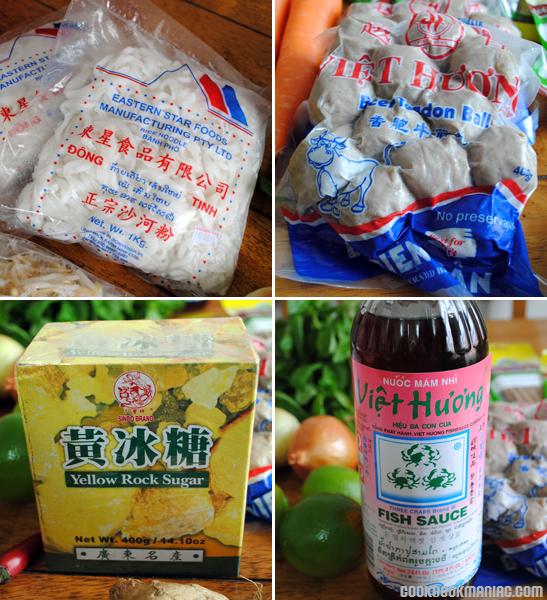
Garnish
250g (1/2 pounds) bean sprouts (two large handfuls)
Basil
Fresh Chilli, sliced thinly
Hoisin sauce
1 lime, cut into wedges

MAKING THE BROTH
1/ Place the onions and ginger on a tray and under the grill (broiler), set the heat on high. When the onions and ginger are charred, approximately 15 minutes, remove from the heat and allow to cool.
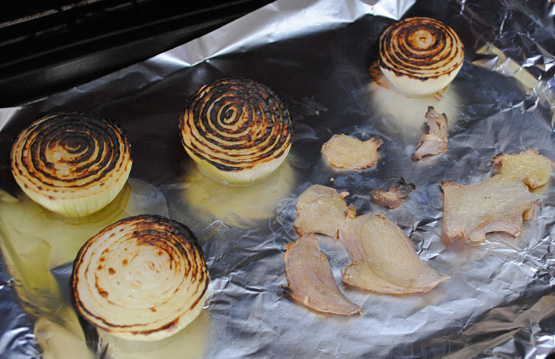
2/ To achieve a clear broth, you must first parboil and rinse the beef bones. Put them in a 12 litre pot and add cold water just to cover. Bring to a boil over high heat and allow to boil vigourously for 10 minutes to release the impurities. Dump the bones into a clean sink and then rinse them with water. Scrub the pot clean and return the bones to the pot.
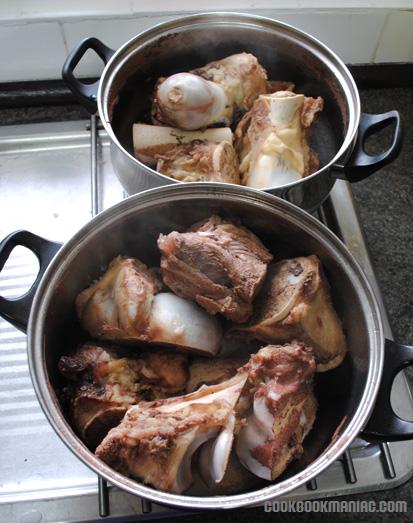
3/ Place the cinnamon stick, star anise, whole cloves and fennel seeds in a cheesecloth and secure with kitchen string (or tie together with a strip of the cheesecloth).

4/ Pour in the 6 litres of water, bring to a boil over high heat, then lower the heat to a gentle simmer. Use a ladle or a spoon to skim off any scum that rises to the top. Add the onions, ginger, carrots, spice bag and beef chuck. Allow the broth to simmer, skimming the scum every now and then. Leave the lid on, but slightly askew, covering 90% of the pot only.
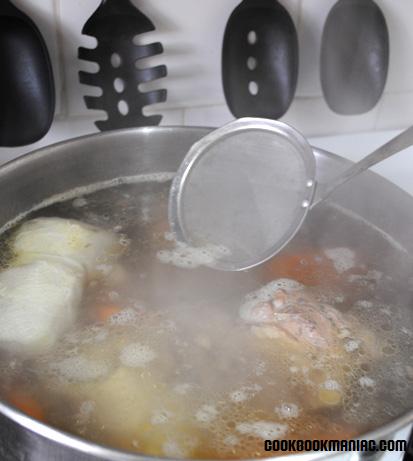
5/ After 1.5 hours remove the beef chuck. Place it on a plate and loosely cover with foil, allow to rest. Allow the broth to continue simmering for another 1.5 hours.
6/ Remove the bones and spice bag from the broth. Add the rock sugar, salt and fish sauce. Allow to simmer for another 30 minutes.
ASSEMBLE THE BOWLS
1/ Cut the cooked beef chuck across the grain into thin slices. For the best results make sure that it is cold.
2/ Freeze the raw beef rump for 30 minutes, slice it across the grain into thin pieces.
3/ Ready the onions, spring onions and beef balls
4/ Arrange the garnishes on a plate and put on the table.
5/ To ensure good timing, bring the broth to a simmer over medium heat as you are assembling the bowls. At the same time, fill a large pot with water and bring to a rolling boil. For each bowl, place a portion of the noodles on a vertical-handle strainer (or mesh sieve) and dunk the noodles in the boiling water. As soon as they have collapsed and lost their stiffness (10 to 20 seconds), pull the strainer from the water letting the water drain back into the pot. Empty the noodles into a bowl.
6/ Top each bowl of noodles with cooked and raw beef arranging the slices flat. Place a mound of onion in the centre and shower some spring onions on top.
7/ Raise the heat and bring the broth to a rolling boil. Ladle approximately 2 cups of broth into each bowl, distributing the hot liquid evenly to warm all the ingredients. Serve immediately with the plate of garnishes.

Tips from the cookbookmaniac
* When pouring the soup from the pot into the bowls, use a fine sieve to catch any excess fat or marrow deposits.
* Do not skip the charring of the ginger and the onion. It is what gives the broth its colour and adds to the complex flavour.
* If you cannot find Yellow Rock Sugar then use 2 tablespoons of normal sugar instead.
* Do not allow the noodles to sit in the hot broth for too long. They will wilt and take on a tacky texture. That said, do not cook the noodles in the big pot of broth, it will ruin it. And do not overcook the noodles. Therefore, only assemble the noodles if it is be eaten straight away.
* This made enough for approximately 15 bowls. You can freeze the broth for later use. However, the herbal headiness of it will deteriorate.
* Call everyone you know – that loves beef – to the table. They’ll adore you.

